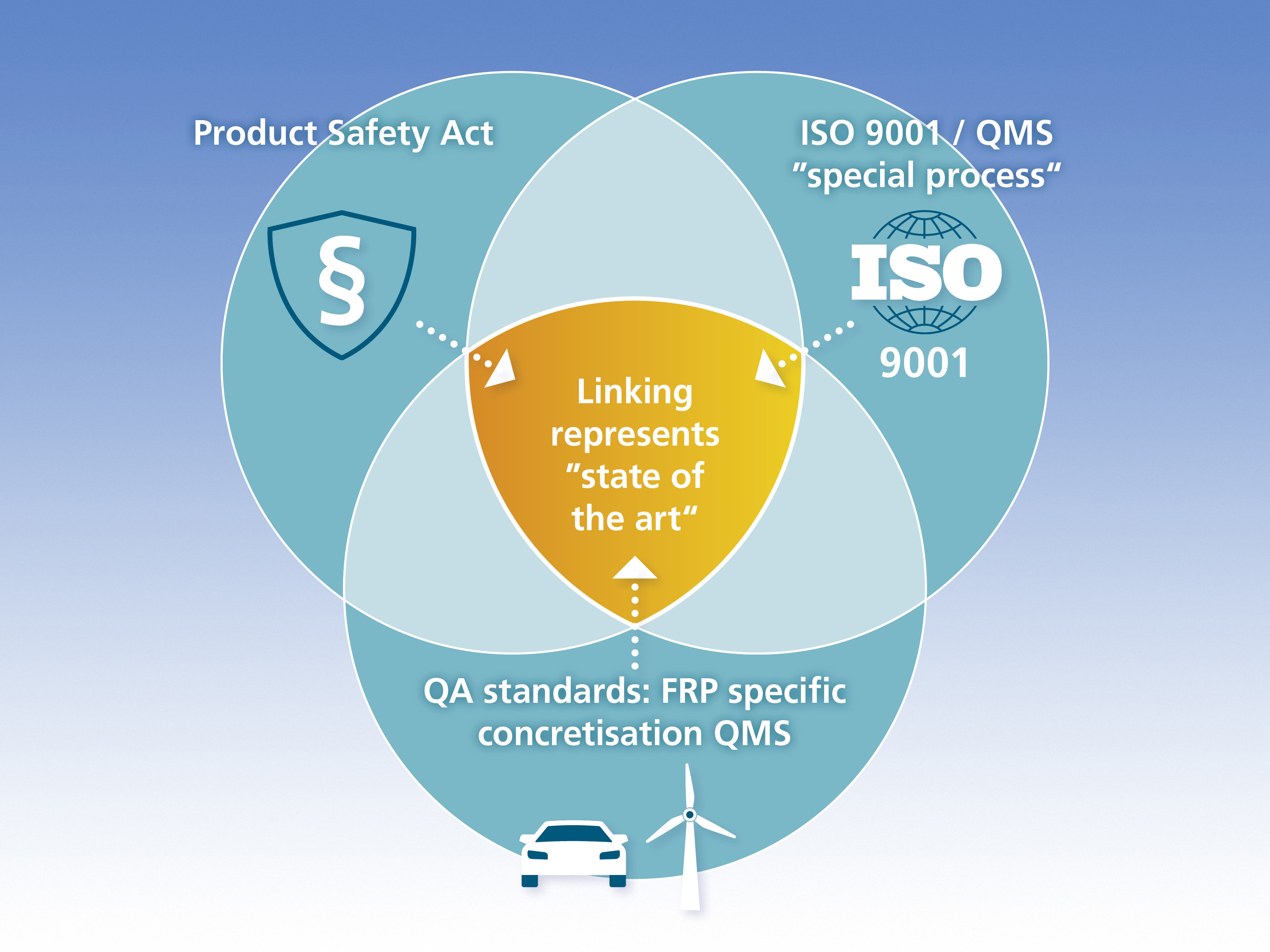In order to be able to use a material, a product made from it or a process safely, the Product Safety Act (PSG) stipulates that work must be carried out in accordance with the "state of the art", particularly in the case of safety-relevant products and processes that lead to these products. In this context, the Product Safety Act stipulates that a product may only be placed on the market "if it does not jeopardise the safety and health of persons when used as intended or in a foreseeable manner".
Safety through standards: The key role of QA standards in adhesive bonding and fibre composite technology
If this proof cannot be provided with purely non-destructive methods and at the same time with one hundred per cent certainty, the underlying manufacturing processes according to ISO 9001 are so-called "special processes". A characteristic feature of "special processes" is that neither the individual production steps nor the finished products can be checked one hundred per cent non-destructively. Defects, even those that are often only discovered during use, must nevertheless be avoided in order to fulfil the "state of the art".
As in the case of welding technology, adhesive bonding technology and fibre composite technology are two more of almost countless so-called "special processes". This means that in all cases, it is not possible to fully test and prove that the respective process or the respective product is one hundred per cent free of defects in a non-destructive manner.
To nevertheless be able to realise the above-mentioned legal requirement of the "state of the art", the internationally recognised and globally introduced ISO 9001 therefore prescribes the introduction of a quality management system (QMS) for "special processes". The primary aim of this QM system is to avoid possible errors from the outset, which are only discovered during use and, in the worst case, can lead to serious damage, thus ensuring process and product safety in accordance with the required "state of the art". In this way, the Product Safety Act combines its legally binding requirement of (non-destructive) safety verification for special processes and products manufactured with these processes with the above-mentioned ISO 9001 core statement of avoiding defects - as far as possible without exception. And this is comprehensive, i.e. from the beginning of a product development phase to the end of product utilisation.
The challenge is that ISO 9001 is logically very broad, i.e. it is or must be technology-unspecific. Against this background, there is a real risk that ISO 9001 company certifications remain within the framework of a formal proof of existence of a QM system, but that a technology-specific orientation of the QMS with regard to processes and products, which is necessary for the legally binding "state of the art", is not the subject of the underlying company audits.
This deficit is countered by means of technology-specific quality assurance standards. In this context, the adhesive bonding QA standards (DIN 6701/DIN EN 17460 and DIN 2304-1/DIN EN ISO 21368) and the new DIN SPEC 35255 for fibre composite technology now exclusively assume the main function of implementing the ISO 9001 core concept of error prevention for adhesive bonding and fibre composite processes and bonded products on the basis of an existing QMS. The main function of the above-mentioned QA documents is therefore to specify the ISO 9001 core concept of error prevention for bonding and fibre composite processes and bonded products as well as products made from fibre composites in a technology-specific manner so that user companies can (still) work safely with bonding technology and fibre composite technology in line with the "state of the art".
The aforementioned QA documents therefore specify both the requirements for quality-compliant development and execution of bonded joints and fibre composite components as well as the general organisational, contractual and production-related principles for development, manufacture, maintenance and repair. Furthermore, they all contain the same core elements: classification according to safety classes, objective proof of the respective technological expertise of personnel and verification of product and process safety. The quality standards thus support the required "state of the art" from the product life cycle phase "planning and development" through the product life cycle phase "use" to the product life cycle phase "end of life" for the professional, error (source) avoiding organisation and implementation of adhesive and fibre composite processes in all areas of industry and trade.
For the "state of the art" mentioned at the beginning, the following is decisive and forward-looking: For the "special processes" of adhesive bonding technology and fibre composite technology and for products manufactured using these processes, the "state of the art" required by the Product Safety Act (PSG) now consists of the inseparable link between PSG, QMS and QA standards. By implementing the QA standards, the user makes the entire process and all product life cycle phases of the products robust and reproducible - i.e. "mastered" in the standards sense - and thus fulfils the "state of the art" for adhesive bonding technology and fibre composite technology.
